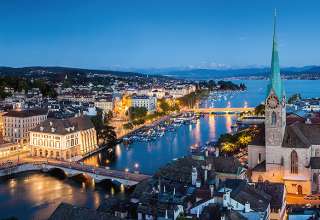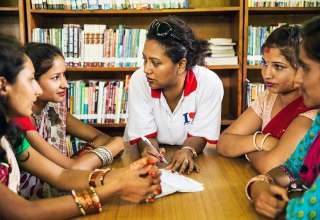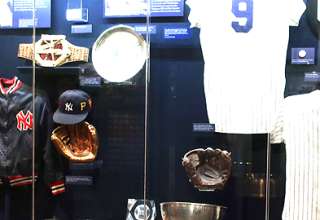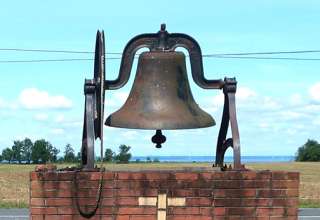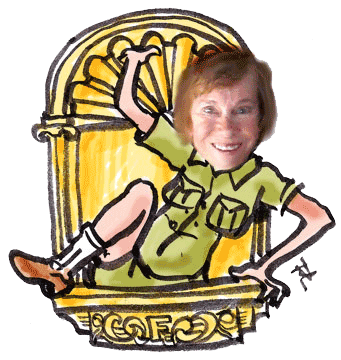It was such a serendipitous meeting. While strolling the gilded Shwedagon Pagoda, Myanmar’s most sacred Buddhist shrine, we stopped to talk to a monk. A very chatty fellow of 51, and a monk for over 25 years, he was very eager to show us the photos from his recent trip to Japan – yup, on his Smartphone. When he actually invited us to lunch at his monastery two days hence, things got even more interesting. And it was only one of the many surprising and unexpected happenings on Myths and Mountains’ Myanmar Odyssey tour.
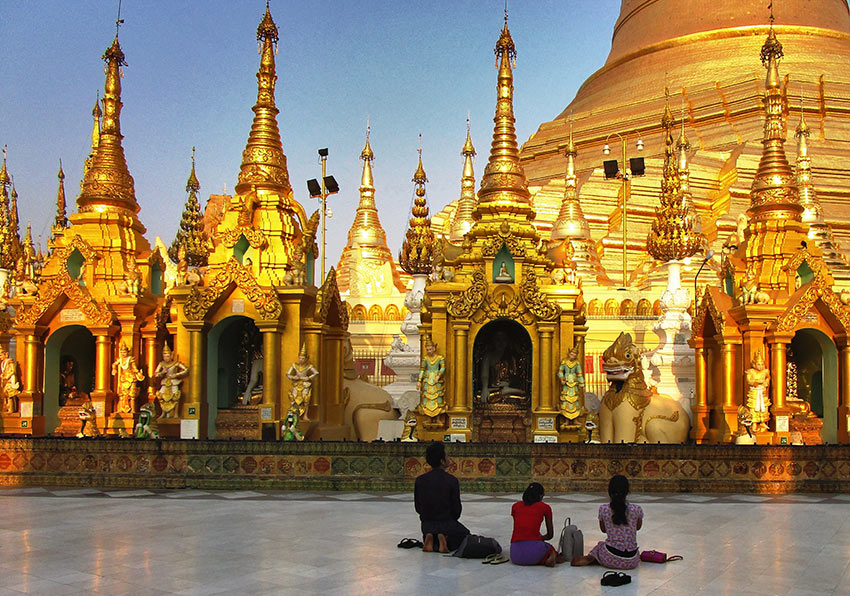
A mystical, magical land filled with pagodas, temples, shrines, stupas and monasteries – of which we saw more than our share – plus the other de rigueur sites traversing lakes and mountains, city and country, caves and cooking classes.
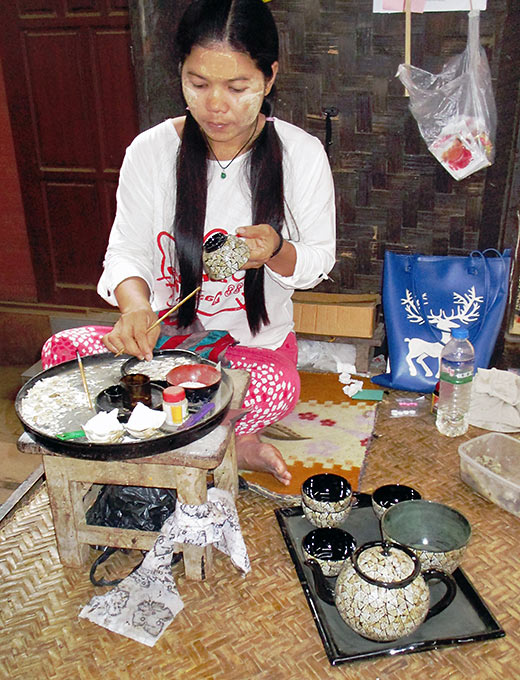
But it is the local markets, small villages and contacts with people leading their everyday lives, usually in the form of making something by hand, that so enrich both the trip and the country. By way of introduction, men wear long plaid skirts called longyis tied at the waist with huge protruding knots; women smear a yellow paste made from Thanaka bark on their faces, in a variety of configurations that acts as sunscreen, skin tightener and coolant. I wasn’t tempted to replicate either fashion statement.
The story of everyday life is everywhere. And everywhere people are making things by hand, often out of materials which are themselves hand-made. We visited a shoemaker – ironically one of few places we didn’t have to remove ours, a de rigueur exercise at every pagoda – who is the only person in Myanmar to make shoes for people with disabilities, by hand of course.
Silver smiths and weavers and lacquer workshops, a parasol factory, a textile workshop, a bronze casting arena, sellers of jade and teak furniture – and everywhere the labor-intensive levels of individual craftsmanship are awe-inspiring. It’s like watching God individually mold the different segments of the moon over a month’s time, and then painting each night’s lunar orb with different brushes tinged with hues of gold and yellow, red and white with painstaking precision. That’s the level of Myanmar artistry. At a going rate of about $4 a day. But hey, sometimes that includes lunch!
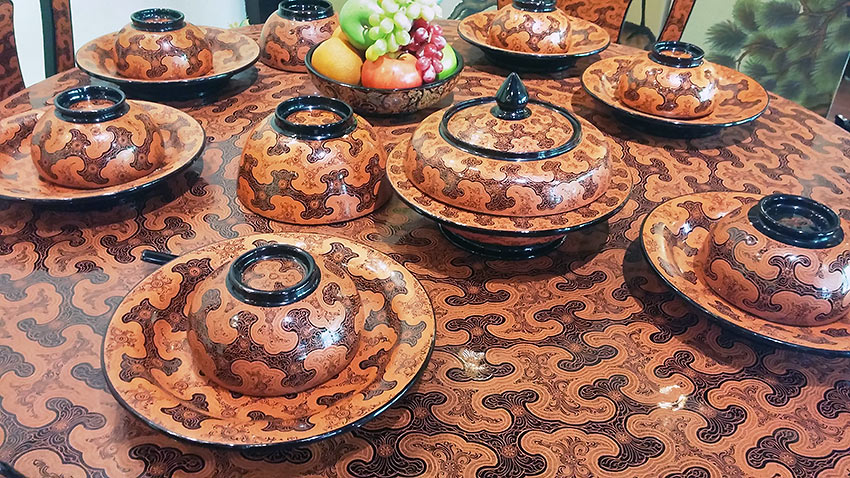
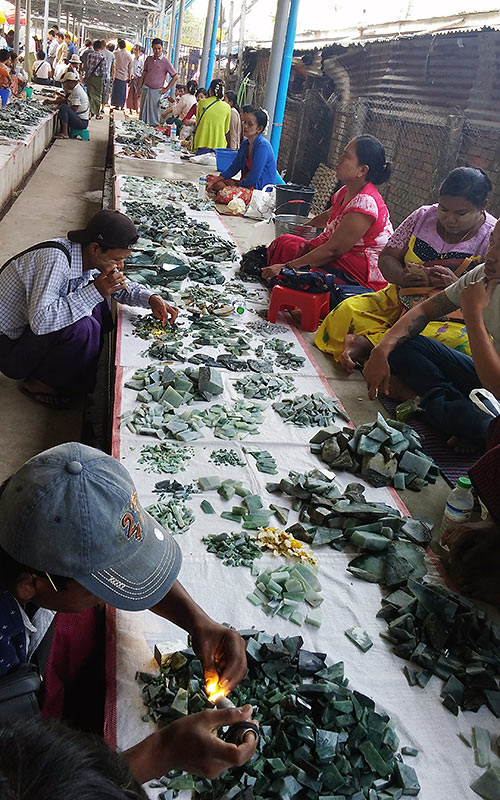
Our local connection continued at a street-long Jade Market comprised of huge slabs not yet chiseled to the tiniest of stones to a comparably-sized market of marble with statues, not surprisingly mostly of Buddhas, in every stage of development from mammoth to miniscule. Workers carving, scraping, hammering, polishing, painting, washing – blocks and blocks (referring here to streets as opposed to slabs) populated by green and white images of various sizes. Onto another workshop in a different medium – this time wood carving. More hammering – also whirring, smoothing, tapping, pounding, appliquéing – and this time Buddha had company; many animals, women in prayer and other decorative items made of teak.
More everyday life is evident on Yangon’s Circular train which takes workers, students, vendors, shoppers to wherever they need to be for a mere 30 cents for a 3-hour round trip. The fact that the train we were waiting for arrived on the other side of the platform fazed no one, so naturally, we just crossed the tracks. In the States, we’d be arrested – or worse, dead. The train was rundown and crowded – but cheap and functional not unlike the markets. Rumor has it that all modes of transportation are being renovated in the last two years under State Counselor Aung Sun Suu Kyi, known affectionately to the locals as “The Lady.”
A young boy walked the aisles selling strawberries, limes, mangoes and oranges, for 50 cents – a roving supermarket. And to think on Washington, D.C.’s Metro, we can’t even bring our own food aboard. This exposure to a slice of life in Myanmar brought with it multiple slices of fruit, as well…
And more fruit, as well as every other aspect of the Burmese diet show up at the local markets which are teeming with people selling and cooking all kinds of foods and trinkets. The babble of unfamiliar background noises lends its own exotic flavor to the compendium of other more tangible flavors. Clothing as colorful as the red, yellow, green and orange fruits. Every inch on both sides of the narrow street, as well as right down its center, is covered with all kinds of veggies and meats and pasta, some familiar, some totally unidentifiable. Negotiating among the throngs of people and produce presents its own challenge. Vendors sitting on their haunches for hours in positions I suspect we would find difficult maintaining for more than a minute.
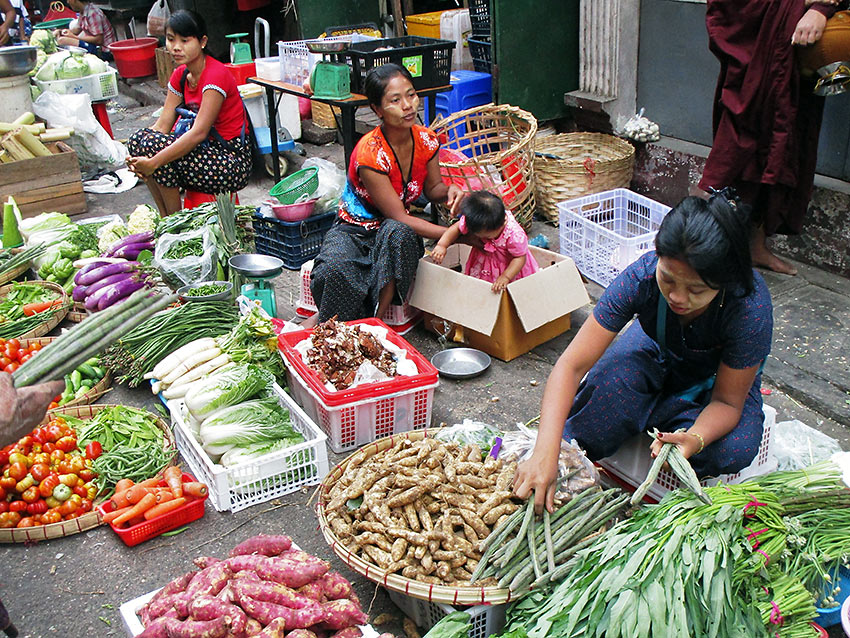
And now time for our aforementioned lunch at the monastery, a veritable vegetarian feast set out upon the floor. In further conversation, I found out I reminded our monk of his 86-year-old mother – which occasioned more pictures, of course, this time on his tablet. At my age, this was not a fact I found particularly pleasing, but he seemed so delighted at the idea, that I became so, as well. Aung Pan Kyaung Tike imparted several Buddhist lessons in casual conversation: you can’t bring anything with you to the next life so might as well give away everything you have. And so it is with the monks, who have no material accumulations of their own but survive on the contributions of others in the community as well as benevolent donors. Because of them, his monastery supports a school in a small village that had none and is currently building a monastery there as well. As to a day in the life of? They awake at 4 a.m., meditate and recite 108 Buddhist mantras before breakfast, head out into the community with their “begging bowls,” and pretty much pray and chant throughout the rest of the day. Lunch is their last meal of the day. Not an easy life for a non-believer like me.
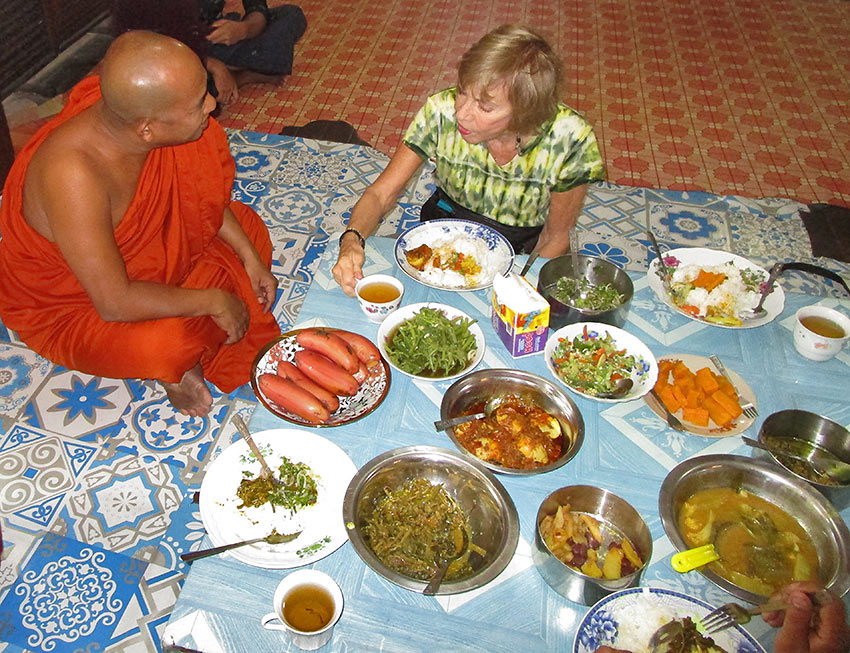
But from monk to merchant, jade cutter to parasol maker, shoemaker to silversmith, the people of Myanmar add a rich diversity to a country known primarily for its many stunning edifices devoted to Buddha and his followers. For more information, contact Myths and Mountains.
